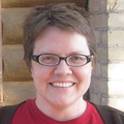
Article
The genetics and evolution of the mariner transposable element in Drosophila simulans: worldwide distribution and experimental population dynamics
Genetica
(1999)
Abstract
We have studied both the frequency and biogeographical distribution of the transposable DNA element mariner in natural populations of Drosophila simulans and the short-term evolutionary characteristics of mariner in experimental populations. The mariner element has been identified in natural populations of D. simulans from Africa, Europe, the Middle East, Japan, Australia, several Pacific islands, North America, and South America. Only four lines out of 296 were devoid of active mariner elements, as measured by the presence of functional mariner transposase. A slight correlation was found between the latitudinal coordinate of the collection sites and the level of mariner activity in the populations; this correlation became highly significant in Australia where a cline in mariner activity was observed along the eastern coast of the continent. We also observed that wild-type laboratory strains kept for several years as small populations might lose mariner activity over time. Using experimental populations, we modeled what might happen when naturally occurring populations exhibiting high and low levels of mariner activity encounter one another. We found that active mariner elements either will tend to lose their activity over time and gradually become inactive or possibly will be lost from the population; in either case, this will lead to the pattern seen in this experiment of a significant loss of mariner activity over time.
Keywords
- Drosophila simulans' evolution,
- mariner,
- natural populations,
- transposable element
Publication Date
1999
Citation Information
Amy L. Russell and R. C. Woodruff. "The genetics and evolution of the mariner transposable element in Drosophila simulans: worldwide distribution and experimental population dynamics" Genetica Vol. 105 (1999) Available at: http://works.bepress.com/amy_russell/14/
